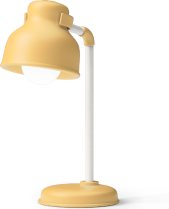Struggling to find winning products on Etsy? A solid Etsy market research strategy will be your key to increasing sales in 2025. In today’s article, we will walk you through finding profitable niches, analyzing competitors, and using data-driven insights to make smarter decisions and build a successful Etsy shop.
- Why Is Etsy Market Research Important?
- 8 Fundamental Steps to Do Etsy Market Research
- Step 1: Find Profitable Niche & Product Ideas
- Step 2: Analyze Existing Customers (If Applicable)
- Step 3: Conduct Competitor Research
- Step 4: Do Etsy Keyword Research
- Step 5: Research Etsy Communities & Forums
- Step 6: Evaluate Pricing & Profitability
- Step 7: Testing & Validating Your Product Idea
- Step 8: Use Etsy Market Research Tools
- Actionable Tips to Do Etsy Research Faster
Why Is Etsy Market Research Important?
Market research is essential for your Etsy shop because it helps you understand what buyers really want. Instead of guessing which products might sell, you can rely on real data to validate your ideas.
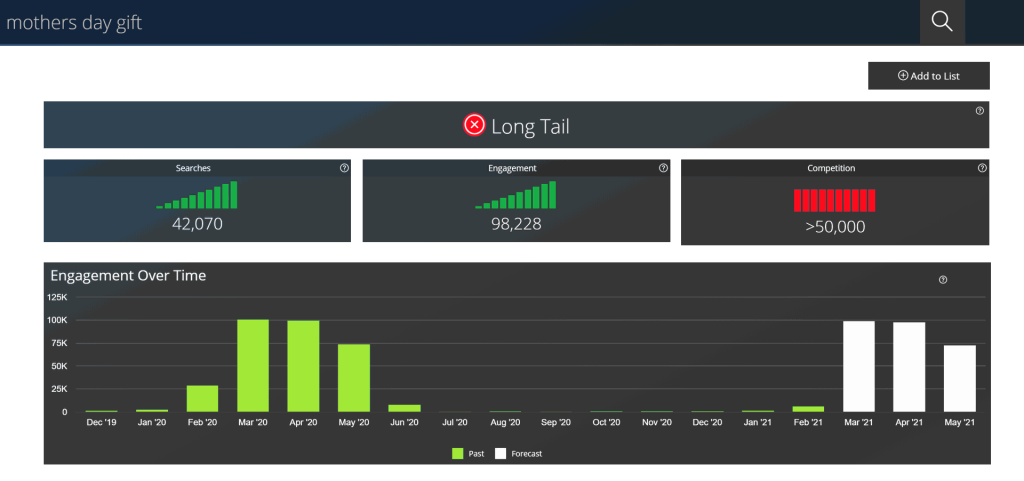
For example, knowing that similar items consistently get 25 sales per month or that there’s a seasonal spike of 30% during certain months can help you plan your inventory and promotions with confidence.
Additionally, market research allows you to spot trends and identify gaps in the market. By analyzing competitors, tracking customer reviews, and monitoring search trends, you can fine-tune your offerings to stand out.
This not only saves you time and money but also builds trust with your customers, ultimately driving more sales and long-term growth for your shop.
8 Fundamental Steps to Do Etsy Market Research
I will now walk you through 8 steps to do market research for Etsy effectively, explaining not only what to do but also why each element is crucial for your success.
Step 1: Find Profitable Niche & Product Ideas
A profitable niche is the backbone of a successful Etsy shop; it’s where your creativity meets market demand.
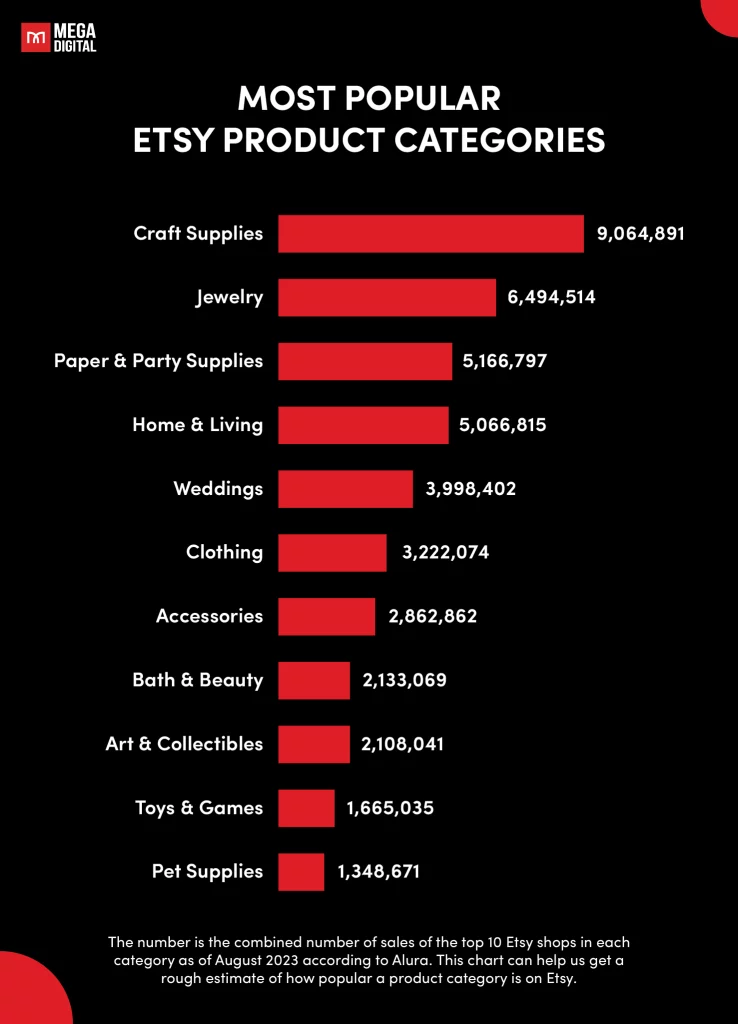
So how to find your sweet spot?
- Check Trending Categories: Browse Etsy’s “Popular Right Now” section and follow social trends on platforms like Instagram and Pinterest.
- Listen to Customers: Dig through reviews to find common requests or pain points that sellers aren’t addressing.
- Brainstorm Smart Ideas: Match your skills with market needs. Use keyword tools like eRank to check search volume and competition. Look for ways to personalize or combine popular trends.
Step 2: Analyze Existing Customers (If Applicable)
If you already have an Etsy shop, your current customer data is an invaluable resource. I often tell my clients to really get to know their buyers—it’s where the real insights lie.
- Review Purchase History: Identify your top three best-selling products over the last six months. A consistent 10–20% monthly growth means you’ve found a winner.
- Sales Trends: Focus on your three best-sellers and track how they’re performing.
- Customer Demographics: Pay attention to age, location, and preferences. If 65% of your buyers fall into the 25-35 age range, tailor your messaging and products to speak directly to them.
- Search Queries: Use Etsy Stats to find your top five traffic-driving keywords then optimize your listings around these high-performing search terms.

Taking the time to analyze these patterns not only helps you understand what’s working but also highlights where you can improve to attract even more of your ideal customers.
Step 3: Conduct Competitor Research
Understanding your competitors can feel a bit like scouting the playing field before a big game. I always recommend taking a close look at what others are doing—not to copy, but to discover the gaps where you can truly shine.
- Identify Your Competitors: Identify 10 Etsy shops selling similar products with at least 500+ sales and 4.5+ star ratings.
- Study Their USP: Look at at least three unique features each competitor offers. This helps you spot opportunities like perhaps no one else is offering a customization option.
- Compare Prices: Analyze 20 similar listings. If your pricing is 10-15% above or below the average, it’s time to adjust while keeping healthy profit margins.
- Learn from Their Listings: Pay attention to their presentation. Rate the quality of their images and descriptions, and strive to be a few points higher than the average.

Lastly, don’t forget to check how they engage with customers. Read reviews—at least 50 from different shops—to see what buyers love and what they wish was better. This research is invaluable for pinpointing where you can offer something different and more appealing.
Step 4: Do Etsy Keyword Research
Keywords are the engine that drives traffic to your Etsy listings. In this step, you will refine your keyword strategy to ensure your products are discovered by the right audience.
First, you can simply start by entering your product’s key attributes into Etsy’s search bar. If you notice that 70% of autocomplete suggestions include terms like “custom” or “handmade,” these should be incorporated into your listings.
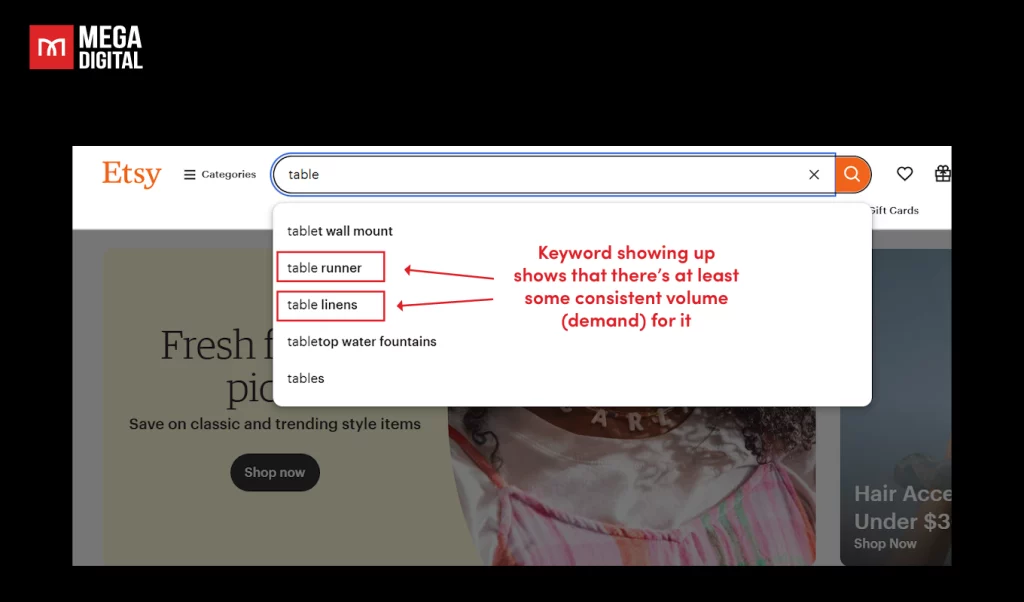
Then, I highly recommend the following keyword research strategies:
- Primary and Long-Tail Keywords: Identify 3-5 primary keywords and 10-15 long-tail keywords that reflect specific buyer intents. This balanced approach increases your reach while targeting niche segments.
- Utilize Keyword Tools: Regularly (on a monthly or quarterly basis) review keyword data using tools like Marmalead and eRank. Focus on keywords with search volumes exceeding 1,000 and competition levels ideally below 50%.
- Monitor Seasonal Trends: Adjust your keyword strategy based on quarterly reviews. For example, if seasonal keywords see a 20% increase during specific periods, update your listings accordingly.
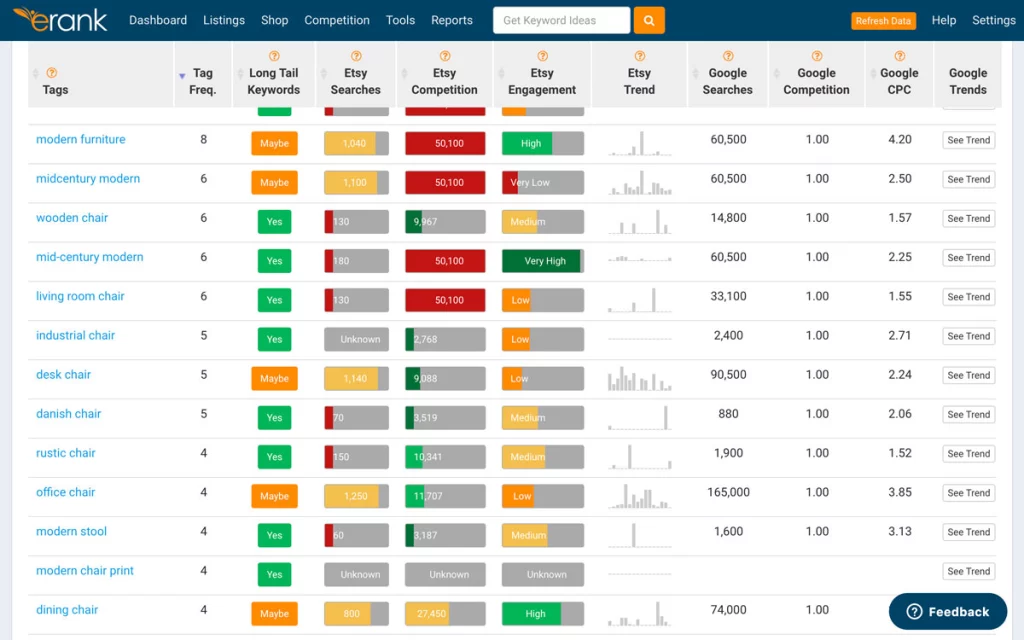
By continually monitoring and refining your keyword strategy, you can ensure that your listings remain relevant and competitive.
Step 5: Research Etsy Communities & Forums
Online communities are an excellent source of qualitative insights. They offer a window into the real-world experiences and preferences of your potential customers.
- Engage in Discussions: Dedicate at least two hours per week to platforms such as Reddit’s r/Etsy and relevant Facebook groups. These discussions can reveal valuable insights into current trends and customer preferences.
- Document Recurring Themes: Record insights from a minimum of 30 posts or comments each month to refine your product offerings accordingly.
- Foster Relationships: Aim to participate in at least three meaningful interactions per week. These relationships can lead to collaborative opportunities and word-of-mouth promotion.
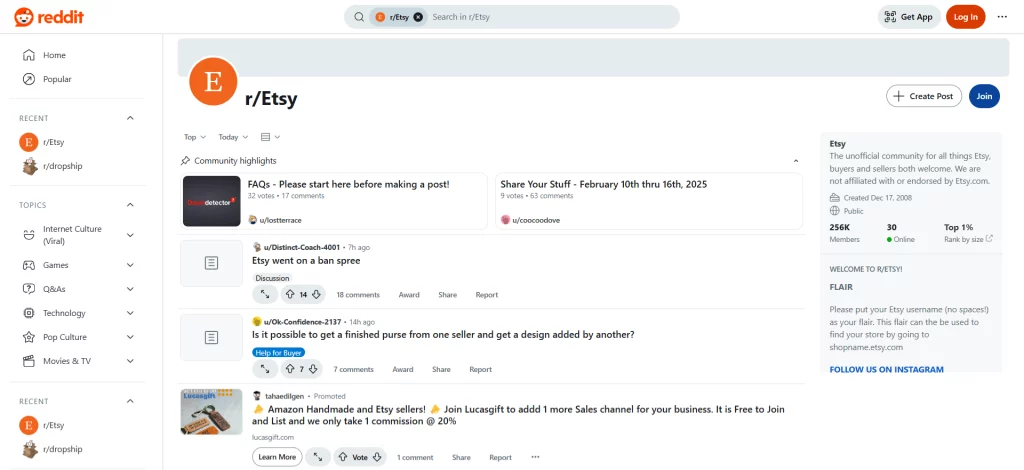
After gathering insights from these communities, take time to reflect on the recurring themes and customer concerns. These findings will help you adapt your products and messaging to better meet the expectations of your target market.
Step 6: Evaluate Pricing & Profitability
Pricing is critical for ensuring both competitiveness and profitability. This step involves a detailed analysis of all cost factors to set the right price point for your products.
- Comprehensive Cost Analysis: Include materials, Etsy fees (5-10%), packaging, and labor. Aim for at least a 30% profit margin.
- Market Benchmarking: Compare your pricing with that of at least 10 competitors. Adjust your pricing if your product is 10-15% more expensive or cheaper than the average market rate.
- Monitor Profit Margins: Review your profit margins monthly and conduct a thorough analysis every two months to adjust pricing strategies based on market conditions.
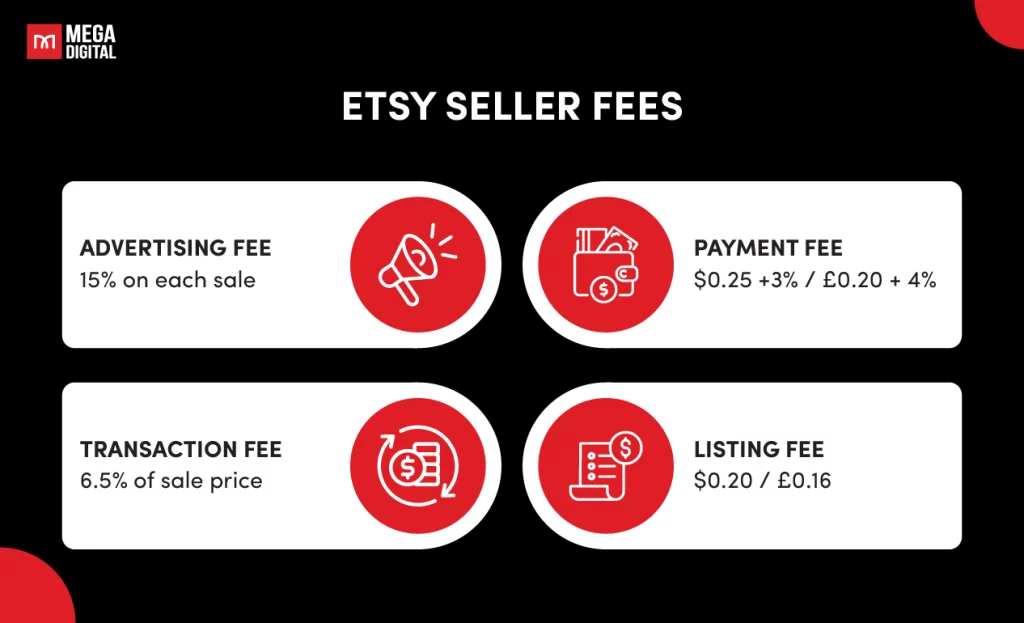
Taking the time to fine-tune your pricing strategy ensures that you remain competitive while still maintaining healthy margins.
>>> Read more: 9 Expert-Recommended Dropshipping Pricing Strategies (2025)
Step 7: Testing & Validating Your Product Idea
Direct feedback from your customers is one of the most reliable forms of market research. Surveys or polls can provide you with clear, actionable data if your product idea will work or not.
- Develop Targeted Questions: Create a survey consisting of at least 10 questions that address product features, price sensitivity, and purchase motivations.
- Frequency and Reach: Conduct these surveys quarterly or after major product launches, and aim for at least 100 respondents to ensure statistically significant results.
- Analyze and Act: Use the survey results to identify areas for improvement, targeting a 15% increase in customer satisfaction scores within the next quarter.
- Use Social Media: Internet users are most active on social media, so create Facebook polls, Instagram questions, etc. to drive more responses.
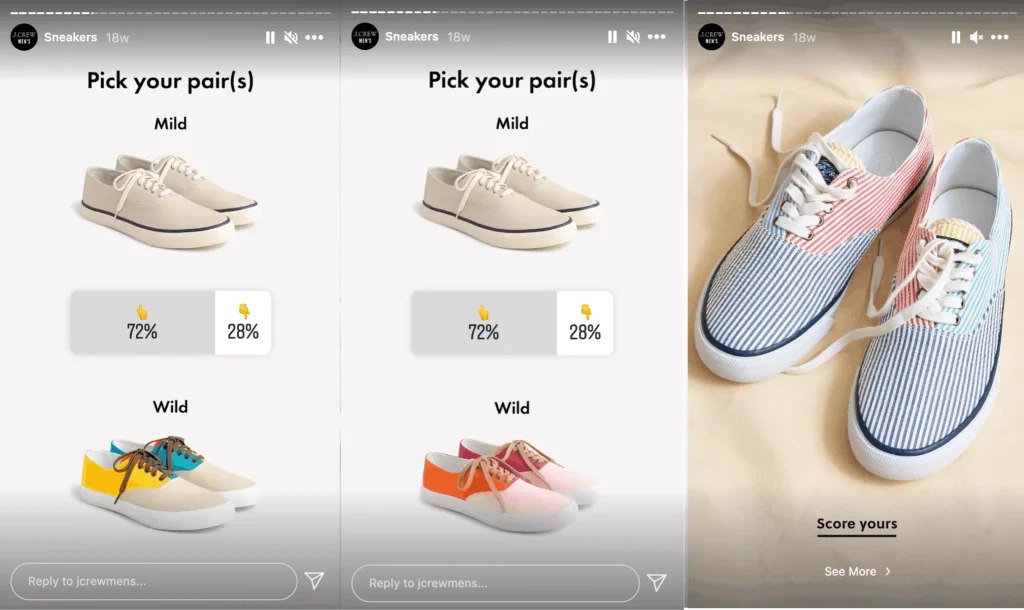
I’ve also seen sellers using targeted advertising to gain immediate, actionable insights into how their products are performing in the market. This step is all about testing and refining ad strategies.
- Ad Campaign Setup: Begin with small-scale ad campaigns on platforms such as Etsy Ads, Instagram, or Pinterest, with an initial budget of $100-$200 per month.
- Key Metrics: Track essential metrics like click-through rates (CTR), aiming for a CTR between 3-5%, and conversion rates, ideally around 2-3%.
- Iterative Refinement: Review your ad performance on a weekly basis and make adjustments every two weeks based on ROI (targeting a minimum of 150% ROI) and overall customer engagement.
The data you gather will guide your product development and marketing strategies in a measurable way.
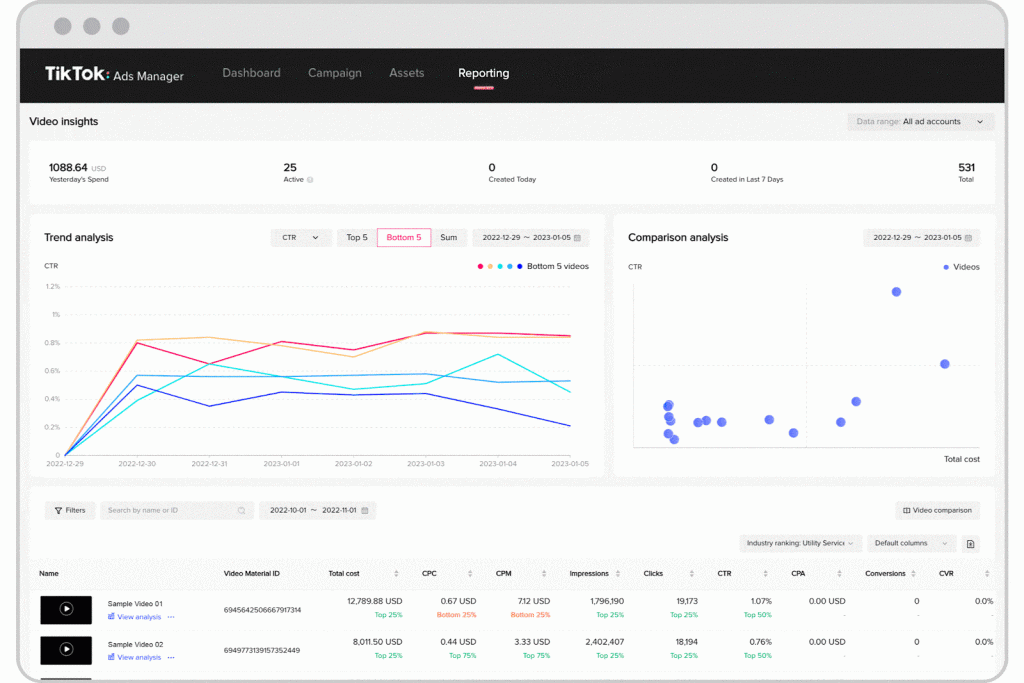
This iterative approach to advertising helps ensure that your campaigns remain effective and that you are continuously optimizing your strategy based on real-time data.
Step 8: Use Etsy Market Research Tools
Now, I know many of you might be tempted to jump straight into using comprehensive tools because they seem like the easiest shortcut. So why do I suggest saving this step for last?
I highly recommend you get a solid grasp of the basics first. Once you understand every aspect of your market, you can really make the most of these tools.
After all, the best tools don’t come free, and we want every dollar you spend to count. While manual research is invaluable, all-in-one tools can significantly streamline the process:
- Marmalead: This tool offers in-depth keyword analysis, listing optimization suggestions, and trend tracking. With Marmalead, you can evaluate how well your current listings perform and adjust accordingly.
- eRank: Another robust tool, eRank provides insights into search volumes, competition metrics, and even competitor analysis. It’s particularly useful for identifying keyword gaps and benchmarking your performance.
- Additional Tools: While not as common, exploring other platforms like SaleHoo or CraftCount can also yield supplementary insights.
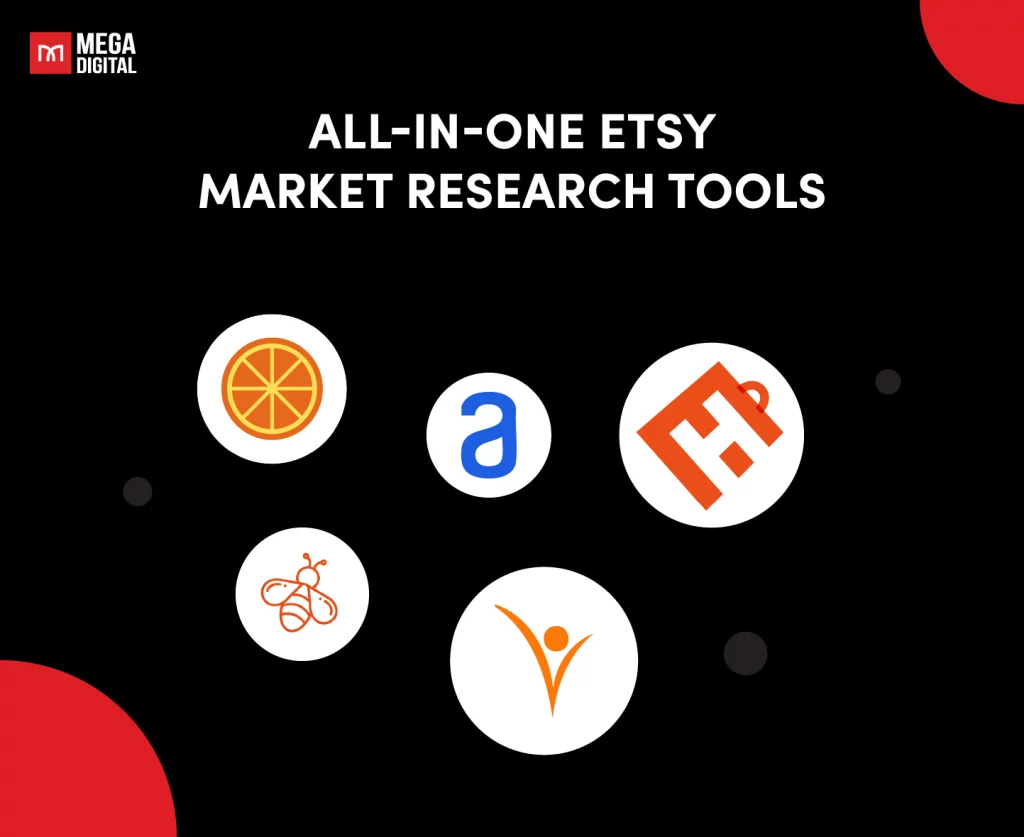
For example, using Marmalead, you can:
- Explore Keywords: Enter a base keyword to receive a list of related terms, complete with metrics like search volume and competition scores.
- Analyze Listings: Get feedback on your current product listings, including SEO for Etsy score, image quality, and descriptive clarity.
- Monitor Trends: Stay ahead of seasonal and emerging trends by tracking changes in keyword popularity over time.
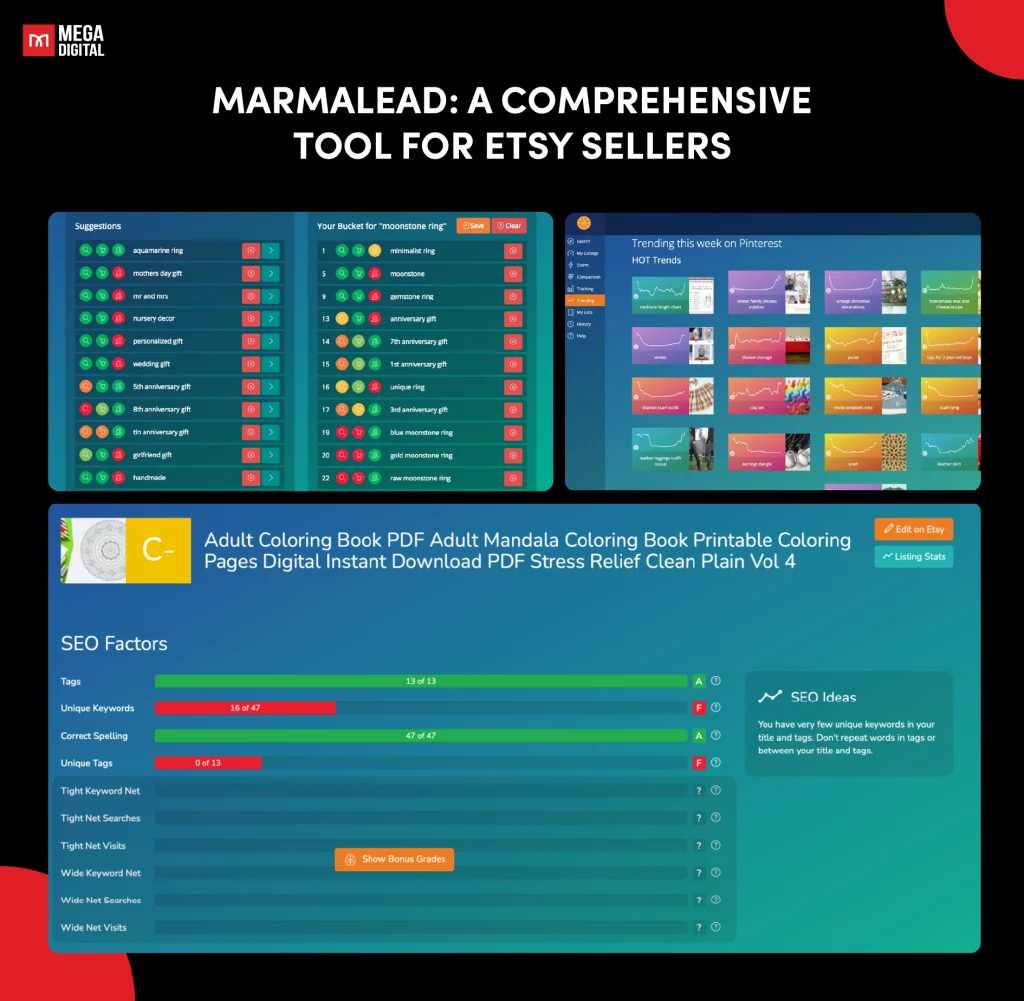
With these tools, you can save time and ensure that your market research is both comprehensive and accurate to stay ahead in a competitive market.
>>> Read more: Marketing on Etsy: Top 15 Strategies to Promote an Etsy Shop
Actionable Tips to Do Etsy Research Faster
Want to speed up your Etsy market research without missing key insights? Here are five practical tips to make the process quicker and more efficient:
1. Use Etsy Search Autocomplete to Find Winning Keywords
A quick way to discover what buyers want is by using Etsy’s search bar. Start typing a broad keyword related to your niche and watch the autocomplete suggestions pop up. These are real search terms from active shoppers.
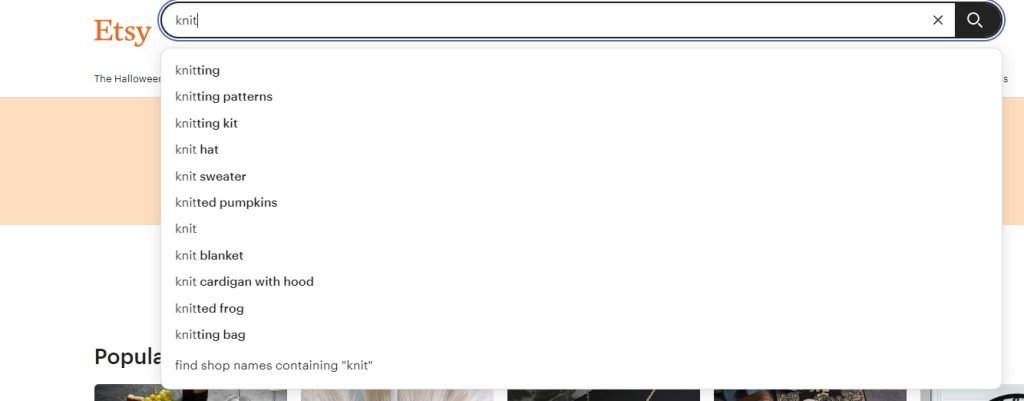
Then, write down the most relevant ones and incorporate them into your product titles, descriptions, and tags. This helps you target popular keywords without spending hours on research.
2. Filter for “Bestseller” and “Popular Now” Listings
Etsy’s filters can help you identify winning products in seconds!
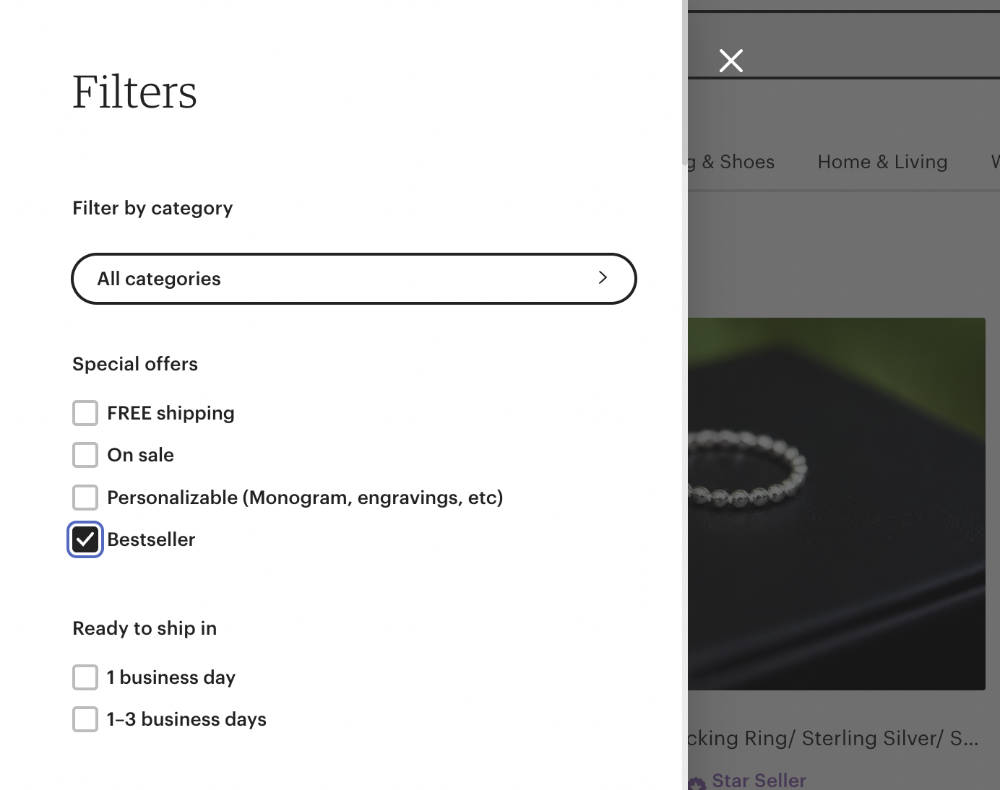
When browsing categories, apply the “Bestseller” and “Popular Now” filters to highlight trending listings. From this, pay attention to their product photos, pricing, and description to find out what’s working and give you ideas to optimize your own listings for better visibility and sales.
3. Track Seasonal Trends with Google Trends
Stay ahead of seasonal demand by monitoring search spikes. Head to Google Trends and enter your product keywords. Set the time range to “Past 5 years” to spot annual patterns.
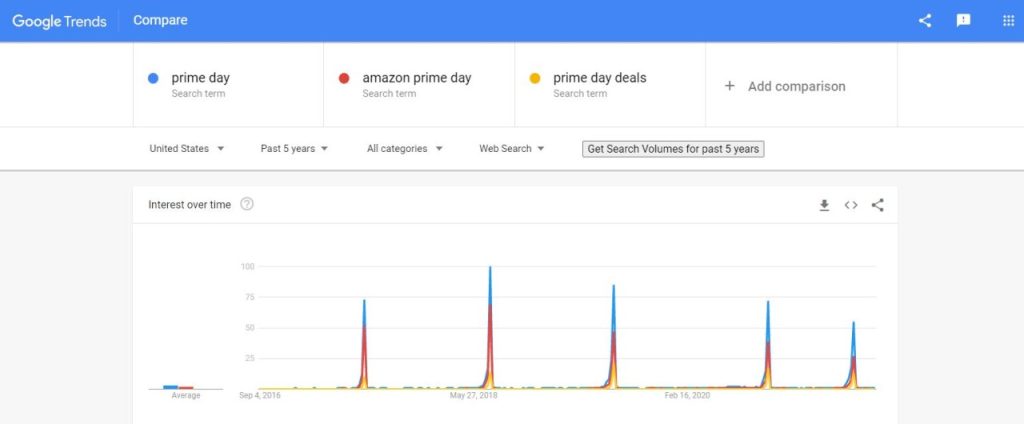
For instance, personalized gifts often surge before holidays like Christmas or Mother’s Day. Use this data to plan and launch seasonal products at the perfect time.
4. Batch Your Research for Faster Results
Instead of switching between tasks, group similar research activities together. For example, here’s a streamlined workflow to follow:
- Day 1: Collect keyword ideas using Etsy autocomplete.
- Day 2: Analyze top products with Everbee or eRank.
- Day 3: Identify seasonal trends using Google Trends.
Batching your research keeps you focused and speeds up the process. Plus, it gives you a clearer, more organized view of what works in your niche.
Conclusion
In 2025, effective Etsy market research is not a one-time task—it’s an ongoing, data-driven process that requires careful attention to detail, continual analysis, and strategic adjustments.
At Mega Digital, we believe every detail matters—from the moment a customer clicks on your listing to the final conversion. The strategies outlined in this guide empower you to conduct comprehensive market research on Etsy.
Now, it’s time to put these insights into practice. Roll up your sleeves, delve into the numbers, and watch your Etsy shop evolve into a thriving, successful business!






